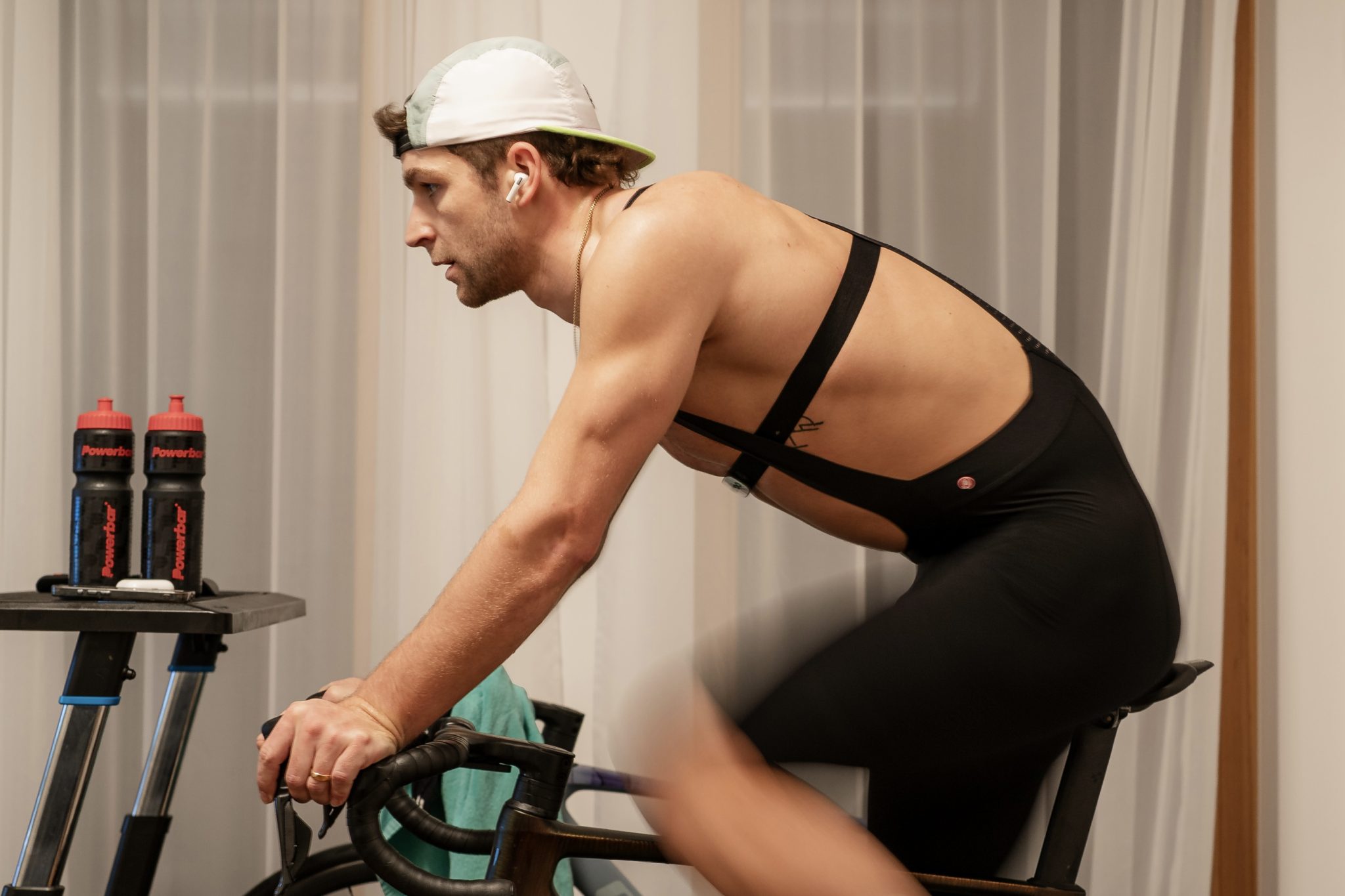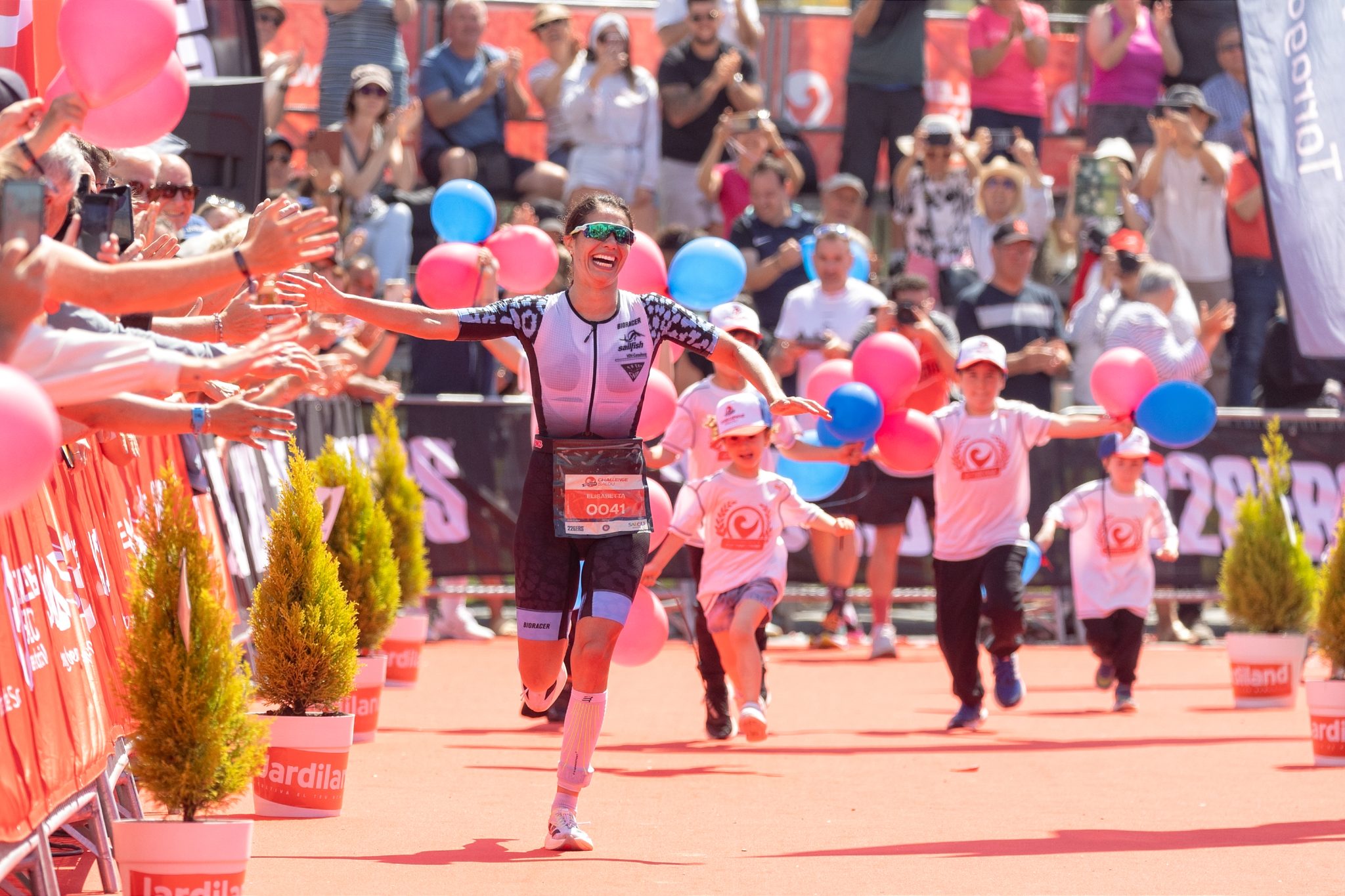Ever get a thing so “new,” it’s hard to find feedback on it? A new plasma TV, a new car (hello, Tesla truck), some right-off-the-shelf headphones, a new brand of cycling kit? We’ve all been there.
Us too. The Quintana Roo V-PRi fits in that realm. It’s only been on the market for a few months, meaning a precious few have had the pleasure of riding it. So who do you go to for feedback? We like the pros—the ones on the bike all the time. If anyone understands the nuance of new things, it’s a pro triathlete.
So we went to French pro Arthur Horseau. One of the world’s top long-course triathletes, he rides his bikes hard. On the flats of the Cote d’Azur, or the hinterland hills, he puts his gear to the true test. With several months of hard training (and one race) under his belt, we asked: what does he notice about the new V-PRi?
Handling
It’s the first thing we wanted to know; how does the V-PRi roll? Can it navigate a big, open course like Roth, and move with deft handling on a technical tight course, capable of navigating traffic circles and hard corners? Horseau says yes to it all.
“Everything is smooth,” he says. “The bike is light for a TT bike, so it makes it very easy to handle while going through a downhill—even the most technical ones that you can find in the Pyrenees.
“Once on the aerobars, that’s when the magic happens,” Horseau adds. “The V-PRi, is probably the most stable bike I’ve been on when the speed starts to increase.”
Weight
Yes, aero is king, but is weight really a thing, and how does the V-PRi fare there?
“it’s a pretty light bike for a TT bike,” he says. “I’ve already done some of my long and hilly rides here in France (with over 3,000 meters of elevation) and it felt great all day long! The fact that the handlebars are “angled towards the rider” is a big plus while riding uphill.
Travel
There’s also the issue of travel. How easily can the V-PRi travel, whether on a plane or made to fit in the back of the car for the drive to the venue? With a size large frame, it’s an issue for Horseau—and he says it ticks the boxes.
“I haven’t used a bag to travel with so far,” he says, “but I’ve been playing with the cockpit for a while and I can tell that it’s very easy to get everything into a “packable” position.
Race Day Nutrition Practicality
When we think about practicality on race day, we look at how a bike to aid your fueling experience, and how few “hang-ups” it has. Can you access your food and drink with ease, and refill without issue? All while maintaining a clean, aero profile? Horseau was pretty firm on this one.
“ It was SO nice to have the FuelBay integrated into the frame,” he says firmly. “I have easily been able to refill it four times during the race, and almost always drank from it. Having the gels easily accessible is also very positive, and I was able to get them while being in the TT position.
Fit
“I’ve felt confident for the whole race to stay in the TT position when racing, even when the road wasn’t the smoothest,” Horseau says. The reach is great, and it was very easy to add my 15° angle.”
At almost 6ft 2 inches tall or 1,87 meters, fit is a big deal for Horseau. Is Quintana Roo’s Intelligent Integration Cockpit (IIC) all that’s promised from a fit standpoint, with big stack option, tons of pad fore/aft and width capacity, to place him in not just a powerful position, but one that he can sustain for hours?
Biased? Maybe Horseau is, just a little. But earning a podium on a new bike wouldn’t happen without a bike that didn’t do what he wanted. Fortunately for him, fast is what he wants. And the V-PRi brings it to him in spades. Ready to explore what has earned Horseau (and a few other top pros like Jon Breiviold and Matt Hanson) some podium hardware this year? Click this link to check out the V-PRi.



